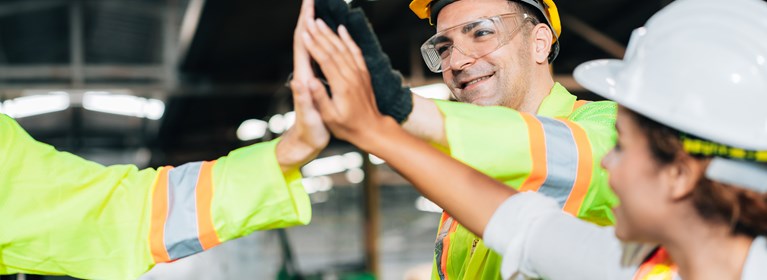
How to Create a Proactive Workplace Safety Culture
How To's | Safety and Training | By | Aug 10, 2022
Workplace culture refers to the way things are done at your workplace. When looking to build safety into your workplace culture, instead of referring to your company's specific safety policies and programs, there needs to be a concerted effort to inform and change the mindsets, attitudes, and behaviors of workers, supervisors, managers, and owners regarding workplace safety. Positive and proactive safety culture is vital to an effective health and safety program.
As an employee, you should feel confident that your health and safety are top priorities. While workplace incidents are unpredictable, exercising proactive safety protocols reduces the chance of an accident occurring in the first place and makes dealing with one much easier. A proactive safety measure is any measure taken to minimize the likelihood of an accident occurring. Taking proactive steps means anticipating accidents, being prepared, minimizing response times, reducing workplace injuries, and more.
Creating a safety culture at your workplace requires a proactive safety attitude and a team approach. Consider these tips to help get everyone on board.
Make Safety a Priority
Your organization's leaders have a critical role in establishing a safety culture, not just physical safety but mental health safety. Management must commit to embodying a safety-first work style and continuously demonstrate that safety is essential and valued. Employers look to the leadership for guidance, so ensure the company's leaders follow all safety standards and encourage others to do so.
Provide Training
Incidents are more prone to happen when workers do not receive adequate training to do their jobs. It's essential to thoroughly train new hires and provide ongoing training to seasoned workers, especially when giving them new responsibilities. Ensuring workers are adequately trained can prevent life-altering injuries.
Commit to Continual Growth
Workplace safety is not static, nor should it be. Those who exemplify a safety culture understand that success should be celebrated, but there is always room for improvement. Maintaining constant growth and implementing continuous improvement systems will ensure your company does not remain stagnant in creating a safer workplace but will continue to strive to achieve an injury-free work environment.
Involve Workers
Nobody knows a job better than the worker who performs it. Supervisors cannot be everywhere at once, so there may be threats to safety on the field you aren't aware of. Therefore, it is essential to talk with workers regularly to know what is happening in all areas of a facility or job site. All employees, regardless of position, should feel empowered to have the authority to present workplace hazards and safety concerns. Worker safety and risk management require teamwork. All complaints should be taken seriously, and workers should know that their issues are being addressed.
Is your company responding to incidents as they occur, taking preventative measures to avoid incidents before they happen? It's never too late to improve your safety culture! Take control of safety and train and educate yourself and fellow employees about hazards in the workplace.
Related Articles
When operating an overhead crane, safety is essential. Whether it's protecting operators from dangerous swinging loads or preventing cranes from colliding with one another, overhead crane safety systems allow you to build intelligence right into your overhead lifting system, helping keep your workers safe and your facility accident-free.
Let's take a closer look at five overhead crane safety systems that can have a significant impact on your operations.
Safety in Automation
Columbus McKinnon Automation Experts, Jim Kluck and Peter Stipan, Discuss How Automation Improves Safety in your Facility
The second session in our Safe + Sound Week 2020 Virtual Speaker Series, Columbus McKinnon Automation Experts Jim Kluck and Peter Stipan discuss how automation can help improve safety throughout your facility.
Safety & Crane Controls
Columbus McKinnon Material Handling Experts Jon Walters, Casey Cummins and Bob Schmitt Discuss Safety & Crane Controls
Columbus McKinnon material handling experts Jon Walters, Bob Schmitt and Casey Cummins discuss how crane controls can be used to improve safety throughout your facility.
Staying Safe in Entertainment Rigging Applications
Best Practices for Staying Safe in Entertainment Industry Applications
Learn what every stagehand should have in their kit, gain an understanding of the evolving safety culture, the importance of training and certifications, and the most important people to make friends with at your work.



 North America - EN
North America - EN







